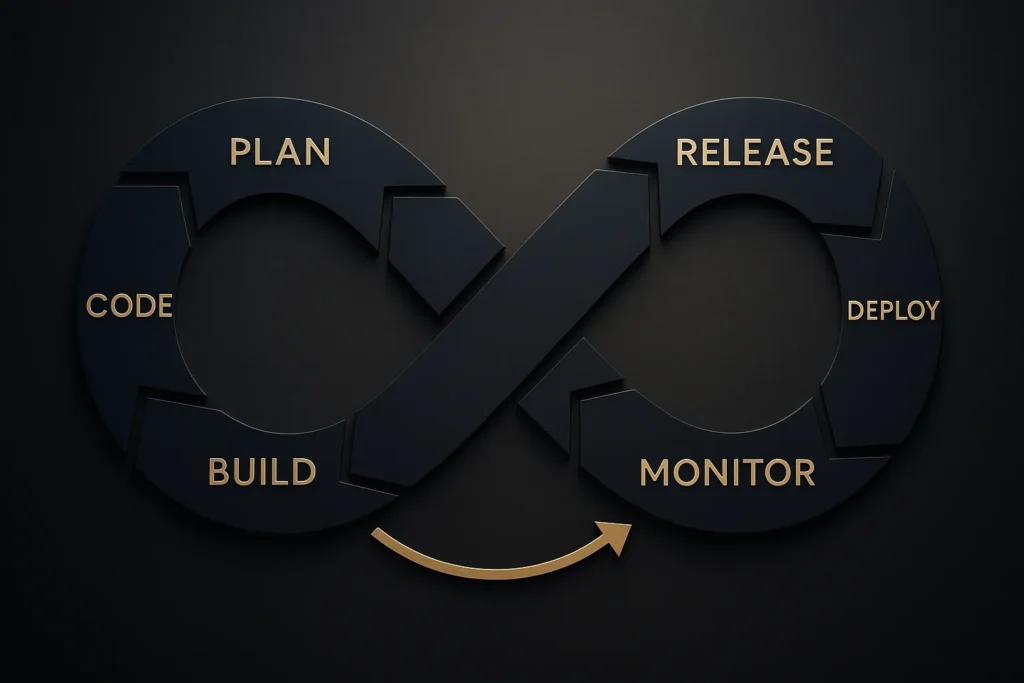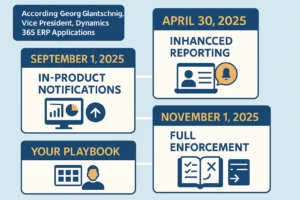Introduction
In the early days of software development, teams were usually divided into two distinct groups:
- Developers (Dev) → responsible for writing code and building features.
- Operations (Ops) → responsible for deploying, managing, and maintaining the infrastructure that runs the code.
While this separation worked for small projects, it often caused major challenges in larger, fast-moving organizations. Developers wanted to release features quickly, while operations teams prioritized stability and uptime. This “wall of confusion” between the two groups often led to:
- Slow and unpredictable release cycles
- Miscommunication between teams
- Difficulty reproducing bugs in production
- Higher operational costs
DevOps was born as a response to these challenges. It is not just a set of tools, but a cultural philosophy and a collection of practices that aim to break down silos, automate workflows, and enable continuous software delivery.
Definition of DevOps
At its core, DevOps is the combination of “Development” and “Operations.”
It is a culture and methodology that encourages collaboration between software developers, IT operations, QA testers, and security teams to deliver software faster, safer, and more reliably.
DevOps is not a product you can buy—it’s a way of working that combines people, processes, and tools to achieve continuous value delivery.
The Core Principles of DevOps
DevOps is built around a few key principles:
- Collaboration and Communication
Breaking down the barriers between developers, operations, and other stakeholders. - Automation
Reducing manual, repetitive work through automation of builds, tests, deployments, and infrastructure provisioning. - Continuous Integration (CI)
Developers integrate code changes into a shared repository frequently, triggering automated builds and tests. - Continuous Delivery (CD)
Software is kept in a deployable state at all times, so it can be released to production quickly and safely. - Monitoring and Feedback
Real-time monitoring, logging, and feedback loops to detect issues early and improve future releases. - Security as a Shared Responsibility (DevSecOps)
Integrating security practices into every stage of the software development lifecycle.
The DevOps Lifecycle
DevOps is often visualized as an infinity loop, representing the continuous nature of its processes:
Plan → Code → Build → Test → Release → Deploy → Operate → Monitor → (back to Plan)
Each stage is connected, with feedback flowing in both directions:
- Plan → Define features, requirements, and tasks.
- Code → Write and manage source code (using Git, for example).
- Build → Compile code, build artifacts, and prepare packages.
- Test → Run automated unit, integration, and performance tests.
- Release → Approve and schedule production deployments.
- Deploy → Automate the rollout of new features to production.
- Operate → Manage infrastructure, scaling, and runtime environments.
- Monitor → Collect metrics, logs, and alerts to ensure system health.
This cycle repeats continuously, enabling organizations to deliver features and fixes at high velocity.

Benefits of DevOps
Organizations that adopt DevOps practices see measurable improvements in both business outcomes and technical performance.
- Faster Time-to-Market → Automated pipelines reduce the time it takes to deliver new features.
- Higher Quality → Continuous testing catches issues earlier in the lifecycle.
- Improved Reliability → Infrastructure as Code (IaC) ensures consistent and reproducible environments.
- Greater Scalability → Cloud-native DevOps practices enable horizontal scaling and elasticity.
- Enhanced Security → Security checks are integrated into every stage of development (DevSecOps).
- Cost Efficiency → Less downtime, fewer manual processes, and optimized resource usage.
According to the State of DevOps Report, high-performing DevOps organizations deploy 46 times more frequently and have a 5x lower change failure rate compared to low performers.
Popular DevOps Tools
DevOps is tool-agnostic, but certain technologies have become industry standards for implementing its practices:
- Version Control → Git, GitHub, GitLab, Bitbucket
- CI/CD → Jenkins, GitHub Actions, GitLab CI/CD, Azure DevOps, CircleCI
- Configuration Management → Ansible, Puppet, Chef, SaltStack
- Containers & Orchestration → Docker, Kubernetes, OpenShift
- Infrastructure as Code (IaC) → Terraform, AWS CloudFormation, Pulumi
- Monitoring & Logging → Prometheus, Grafana, ELK/EFK Stack, Datadog
- Collaboration → Slack, Jira, Confluence, Microsoft Teams
DevOps Culture
One of the biggest misconceptions is that DevOps is purely about tools. In reality, the cultural transformation is just as important:
- Shared Responsibility → Everyone is responsible for quality and reliability.
- Blameless Postmortems → Focus on learning, not blaming, when incidents occur.
- Continuous Improvement → Small, incremental changes rather than big, risky releases.
- Cross-Functional Teams → Developers, operations, QA, and security work together from day one.
Conclusion
DevOps is not a passing trend—it has become the standard approach for modern software delivery. By combining collaboration, automation, and continuous feedback, DevOps enables organizations to:
- Deliver faster
- Reduce errors
- Improve security
- Enhance customer satisfaction
In short, DevOps is about creating a culture where development and operations work as one team, supported by the right practices and tools, to deliver value continuously.
For anyone starting their journey, remember: DevOps is not just about what tools you use—it’s about how your teams work together.
Learn more about our services here.
Contact us today to keep your ERP running at peak performance and reliability.here.









